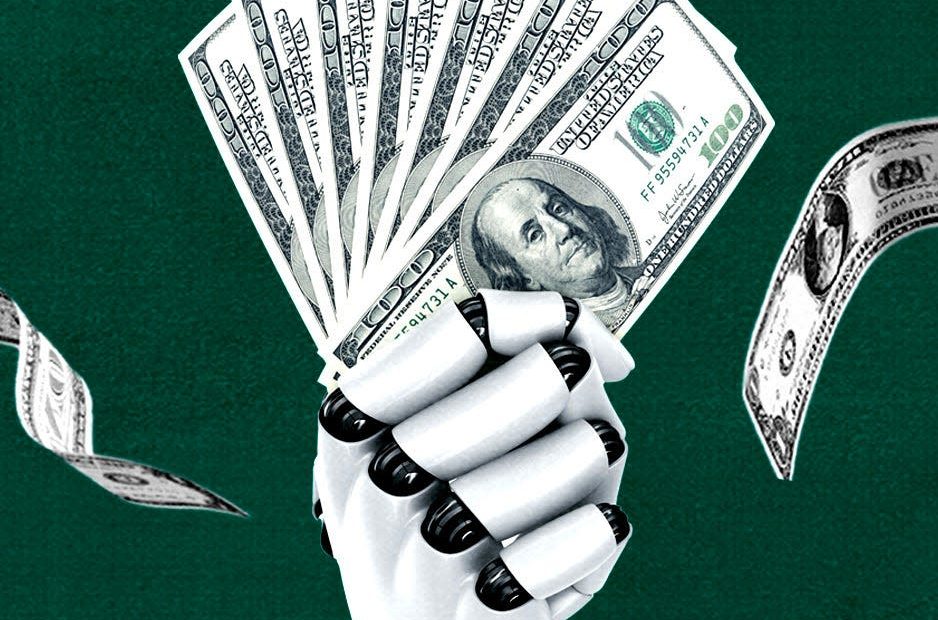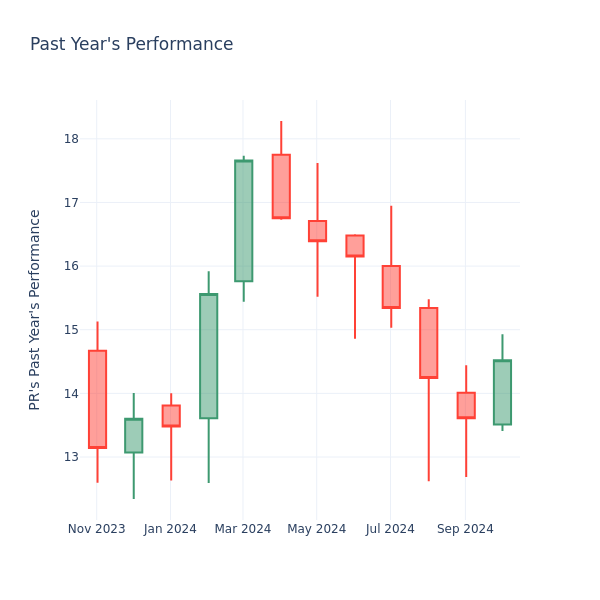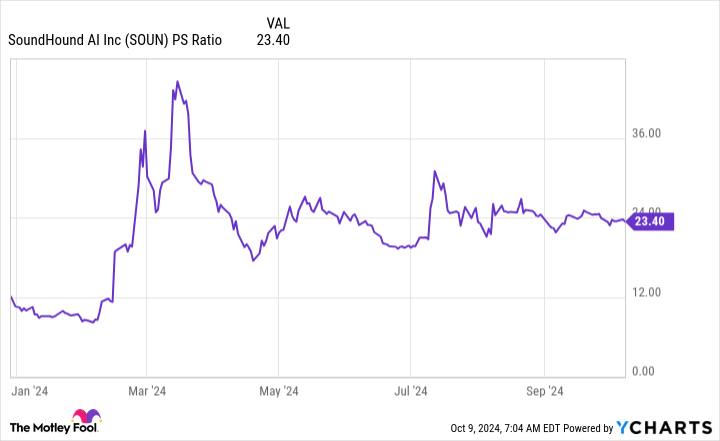The bull market is 2 years old. Here's where Wall Street thinks stocks go next.
The bull market in the S&P 500 (^GSPC) began two years ago and is showing few signs of slowing.
Backed by the rise of artificial intelligence euphoria and a surprisingly resilient US economy, the S&P 500 has gained more than 60% in the past two years and is hovering near an all-time high.
Wall Street strategists who spoke with Yahoo Finance believe the bull can keep running wild. Barring any unexpected shocks, the path higher appears to be clear, with earnings growth expected to keep accelerating and the economy on seemingly solid footing as the Federal Reserve cuts interest rates.
A bull market for the S&P 500 was officially declared in June 2023 when the index rose 20% from its recent bear market low. History says this bull market still has legs. At two years, the bull market is well shy of the average run of 5.5 years. And the total return thus far, about 60%, is a far cry from the average 180% gain, per research from Carson Group chief market strategist Ryan Detrick.
In the past few weeks, several Wall Street equity strategists have made the case for the benchmark index to rise further into both year-end and into 2025, supported by accelerating earnings for the S&P 500.
“We continue to be surprised by the strength of market gains and decided yet again that something more than an incremental adjustment was warranted,” BMO Capital Markets chief investment strategist Brian Belski wrote in a September note when raising his year-end price target for the S&P 500 to a Street high of 6,100 from a previous target of 5,600.
On Oct. 4, Goldman Sachs boosted its year-end target to 6,000 and initiated a 12-month target of 6,300. Goldman Sachs chief equity strategist David Kostin did note, though, that already high valuations could limit the upside for how far the index can reach in 2025.
Risks to the rally
Strategists who spoke with Yahoo Finance agreed with Kostin that already stretched valuations present a challenge to how much higher stocks can go. Charles Schwab senior investment strategist Kevin Gordon noted that dating back to the mid-1960s, the only time valuations have been this stretched on a trailing 12-month price-to-earnings ratio were 2021 and the dot-com bubble of the late 1990s.
“This would tell you that the bull is much older or somewhat near the end of this life,” Gordon said.
But strategists often warn that a high valuation itself isn’t a proper tool for calling the end of a bull market. Stocks can trade at what are considered to be expensive valuations for longer than expected. What that does tell investors is that much of the good news that could push stocks higher might’ve already been priced in.
“If you look at what the market’s discounting right now, we’d say front and center, a big chunk of what’s being priced in is a soft landing sentiment,” Citi equity strategist Scott Chronert told Yahoo Finance.
Piper Sandler chief investment strategist Michael Kantrowitz noted that high valuations themselves aren’t why bull markets end. There needs to be a catalyst. He explained there are two common reasons market drawdowns happen: a spike in interest rates or a rise in the unemployment rate.
With inflation well off the boil of 2022 and the recent increase in unemployment stalling out, neither of the two downside catalysts are clearly in view.
There could, of course, be a surprise no one sees coming. But “it’s a little bit harder to see where the shock comes from,” Chronert said. “If things continue to play out incrementally, investors can handle a little bit of a change [to the economic narrative] here, a little bit of a change there … It’s when you get a more immediate unraveling, and it’s hard to really say that immediate unraveling is going to come.”
This sets the market up for a narrative shift. To Kantrowitz, the currently expensive valuations show that the bull market is likely moving from a macro-driven environment, where factors like inflation falling and other signs of economic resilience have pushed stocks higher, to one that is more based on the fundamentals.
“For this market to continue moving higher, and particularly to determine what stocks lead, it’s going to be all about earnings,” Kantrowitz said.
The bar for earnings remains high. Consensus estimates project earnings to grow nearly 10% in 2024 and almost 15% in 2025. The key for investors remains finding which sectors are seeing earnings growth accelerate rather than just staying steady.
And , according to Chronert, part of that story could come down to the two letters that defined the first part of the bull market: AI.
Chronert, who said his team is still a holder of the “Magnificent Seven” tech cohort, doesn’t doubt that the AI narrative will continue to manifest itself in the market. But after significant gains seen in those tech stocks over the past two years amid large earnings growth, focus may continue to shift to the broadening impact of AI on companies that aren’t making the AI chips or the cloud servers operating the new technology.
For AI to continue to have broader impact on the market and keep pushing earnings growth for the index above expectations, “you’ve got to have more companies delivering on the AI promise via margins [and] profitability metrics,” Chronert said.
He added, “It would be that sort of thesis that has to play out, and that’s going to take two to five years.”
Josh Schafer is a reporter for Yahoo Finance. Follow him on X @_joshschafer.
Click here for in-depth analysis of the latest stock market news and events moving stock prices
Read the latest financial and business news from Yahoo Finance
These stocks are best-positioned to gain in the next wave of AI investment, Goldman Sachs says
-
AI enthusiasm has rebounded in recent weeks after investors worried about returns over the summer.
-
In the next wave of investment, Goldman Sachs analysts recommend “platform” stocks like Microsoft and Datadog.
-
Analysts recommend stocks that will build a direct application of AI and allow for more widespread adoption.
Move over, Nvidia.
With artificial intelligence investment rebounding after excitement cooled over the summer, a new set of stocks is set to benefit from the next wave of cash flowing to the burgeoning sector, according to Goldman Sachs.
In the next round of AI investment, Goldman Sachs analysts say investors should look past the obvious picks—Nvidia and AI infrastructure companies—and toward a select set of platforms set to build out a direct application of AI.
“Our equity analysts believe ‘platform’ stocks, including databases and development tools, are set to be the primary beneficiaries of the next wave of generative AI investments. These platforms allow the best use of AI infrastructure while providing building blocks to construct next generation applications,” the analysts said in a Thursday note.
The analysts name Microsoft, DataDog, MongoDB, Elastic, and Snowflake as the best-positioned platform stocks as they roll out AI-integrated applications.
While many of those platform stocks have plunged this year on near-term fundamental weakness, they have historically low valuations and stabilizing revisions that set them up well as AI investment rebounds, the analysts say.
The analysts’ recommendations come as investors remain focused on Nvidia and the companies that build out AI infrastructure, such as semiconductors, cloud providers, and data center REITs.
The analysts say the share prices for those stocks will likely continue to increase, but returns will be driven more by earnings than valuations.
“Expected future returns could be constrained by elevated starting valuations, although valuations are historically a poor near-term signal for large-cap equities,” the analysts said, adding that with AI spend surprising less to the upside than before, that could make for more moderate returns for those “phase 2” AI infrastructure stocks.
In general, the platform stocks are the exception among other “phase 3” stocks—those with potential to monetize AI by generating incremental revenues like in software and IT services— because the timing of AI monetization is still uncertain.
The same goes for “phase 4” stocks, or companies that would benefit from widespread adoption in general since that’s likely still years away, the analysts said.
“We believe the roll-out of applications among Phase 3 stocks is a necessary condition before investors will gain confidence about owning Phase 4 stocks with the largest potential earnings gains from AI-related productivity,” they said.
The analysts’ comments come after flows into AI stocks dwindled over the summer as traders expressed worries over returns on big AI spending. That led to sharp underperformance in July, and in early August, Nvidia tumbled as much as 27% from its all-time high in June.
Now, the stock is back up to trading near its record high as the AI trade has reaccelerated in recent weeks amid interest rate cuts from the Federal Reserve and strong macro data.
Read the original article on Business Insider
Surprise! These 3 High-Growth Artificial Intelligence (AI) Players Are Looking More and More Like Value Stocks
Artificial intelligence (AI) stocks offer investors great potential for gains thanks to the promise of the technology to revolutionize many areas — from making companies more efficient to developing the next game-changing medicine, AI could make a huge mark on history. That’s why many AI stocks have roared higher, boasting lofty valuations, and many investors had the feeling that if they wanted to score an AI win, they would have to pay a high price.
But I have a surprise for you: Some very promising AI players actually are looking more and more like value stocks, as their valuations have reached bargain levels, considering their track records and future potential. They may not exactly have crossed the line into value-stock territory, but they’re close enough to prompt growth and value investors to take notice. Let’s check out three AI stocks that look dirt cheap right now and might offer you an excellent buying opportunity.
1. Super Micro Computer
Super Micro Computer‘s (NASDAQ: SMCI) earnings and stock soared earlier this year as customers flocked to the company for its AI data center equipment — products such as workstations and servers. In fact, Supermicro’s quarterly revenue, climbing into the billions, even surpassed its annual revenue as recently as in 2021.
Earnings remain strong, and the company even offered investors fantastic news this past week when it said it’s been shipping 100,000 graphics processing units (GPUs) for AI on a quarterly basis. The company works with top chip designers like Nvidia to integrate their chips into its equipment.
But recent headwinds have stopped the stock in its tracks. These include a report from a firm shorting the stock, alleging troubles at Supermicro, and a Wall Street Journal report of a possible Justice Department probe. At the same time, Supermicro has delayed its annual 10-K report. All of these elements have weighed on investor confidence.
I don’t recommend Supermicro right now for cautious investors until these uncertainties are resolved, but aggressive investors may consider a small position in this top AI player, as it’s trading for a bargain-basement price, at only 14x forward earnings estimates.
2. Alphabet
Alphabet (NASDAQ: GOOG) (NASDAQ: GOOGL), trading for 21x forward earnings estimates, is the cheapest of the high-growth tech stocks known as the “Magnificent Seven.” Yet, the company has a track record and future prospects that are just as exciting as those of these peers.
You probably know Alphabet best thanks to Google Search, the world’s most popular search engine, and advertising on Google generates the lion’s share of Alphabet’s revenue. But the company also has another very promising business that’s reached big milestones recently thanks to the company’s investment in AI. I’m talking about Google Cloud.
The cloud business reported a double-digit gain in revenue and a triple-digit increase in operating income in the recent quarter, and these metrics also reached important milestones. Google Cloud revenue advanced beyond $10 billion for the first time, and the business’ operating income rose past $1 billion. The company says its AI infrastructure and solutions for cloud customers have brought in billions of dollars in revenue this year — and more than 2 million developers are using these tools.
Alphabet is offering customers AI solutions for all of their needs, and also has applied AI to its Google Search business — so Alphabet could become an AI powerhouse over the long run.
3. Meta Platforms
Meta Platforms (NASDAQ: META) is another Magnificent Seven player trading for a very reasonable price, at 27x forward earnings estimates. The company is a leader in the world of social media, as it owns Facebook, Messenger, Threads, WhatsApp, and Instagram — and its investment in AI could reinforce its position here.
Meta pledged to make AI its biggest investment theme of this year, aiming to have on board the equivalent of 600,000 graphics processing units of compute by year end. The tech giant is working to develop AIs that all of its users could apply to their needs — from leisure to business. This should prompt us to spend more time on Meta’s apps, and in turn, advertisers may increase their already hefty advertising presence there in order to reach us.
Advertising represents most of Meta’s billion-dollar revenue today, so investing in an area that could secure advertising spending is wise. On top of this, Meta is going all-in on AI, so other products or services may be on the horizon. At today’s price, Meta is a great addition to the portfolios of investors with a focus on both growth and value.
Should you invest $1,000 in Super Micro Computer right now?
Before you buy stock in Super Micro Computer, consider this:
The Motley Fool Stock Advisor analyst team just identified what they believe are the 10 best stocks for investors to buy now… and Super Micro Computer wasn’t one of them. The 10 stocks that made the cut could produce monster returns in the coming years.
Consider when Nvidia made this list on April 15, 2005… if you invested $1,000 at the time of our recommendation, you’d have $826,130!*
Stock Advisor provides investors with an easy-to-follow blueprint for success, including guidance on building a portfolio, regular updates from analysts, and two new stock picks each month. The Stock Advisor service has more than quadrupled the return of S&P 500 since 2002*.
*Stock Advisor returns as of October 7, 2024
Suzanne Frey, an executive at Alphabet, is a member of The Motley Fool’s board of directors. Randi Zuckerberg, a former director of market development and spokeswoman for Facebook and sister to Meta Platforms CEO Mark Zuckerberg, is a member of The Motley Fool’s board of directors. Adria Cimino has no position in any of the stocks mentioned. The Motley Fool has positions in and recommends Alphabet, Meta Platforms, and Nvidia. The Motley Fool has a disclosure policy.
Surprise! These 3 High-Growth Artificial Intelligence (AI) Players Are Looking More and More Like Value Stocks was originally published by The Motley Fool
Fastenal Q3 Earnings: Taking a Look at Key Metrics Versus Estimates
Fastenal FAST reported $1.91 billion in revenue for the quarter ended September 2024, representing a year-over-year increase of 3.5%. EPS of $0.52 for the same period compares to $0.52 a year ago.
The reported revenue represents a surprise of -0.26% over the Zacks Consensus Estimate of $1.92 billion. With the consensus EPS estimate being $0.52, the company has not delivered EPS surprise.
While investors closely watch year-over-year changes in headline numbers — revenue and earnings — and how they compare to Wall Street expectations to determine their next course of action, some key metrics always provide a better insight into a company’s underlying performance.
Since these metrics play a crucial role in driving the top- and bottom-line numbers, comparing them with the year-ago numbers and what analysts estimated about them helps investors better project a stock’s price performance.
Here is how Fastenal performed in the just reported quarter in terms of the metrics most widely monitored and projected by Wall Street analysts:
- Business days: 64 Days versus the six-analyst average estimate of 64 Days.
- Daily sales: $29.80 versus the four-analyst average estimate of $29.92.
- Number of in-market locations: 3,583 compared to the 3,567 average estimate based on three analysts.
- Weighted FASTBin/FASTVend installations: 123,193 versus 122,318 estimated by two analysts on average.
- Number of active Onsite locations: 1,986 compared to the 1,979 average estimate based on two analysts.
- Number of branch locations: 1,597 versus the two-analyst average estimate of 1,591.
- Weighted FASTBin/FASTVend signings: 7,281 compared to the 6,570 average estimate based on two analysts.
Shares of Fastenal have returned +0.2% over the past month versus the Zacks S&P 500 composite’s +5.4% change. The stock currently has a Zacks Rank #4 (Sell), indicating that it could underperform the broader market in the near term.
Market News and Data brought to you by Benzinga APIs
© 2024 Benzinga.com. Benzinga does not provide investment advice. All rights reserved.
3 No-Brainer Stocks to Buy if Donald Trump and Republicans Sweep in November
In 24 days, millions of Americans will head to the polls. Many others have already begun early voting.
DecisionDesk HQ predicts that former President Donald Trump has a 48% chance of returning to the Oval Office for a second term. According to its model, Republicans have a 71% chance of winning the Senate and 54% chance of holding on to control of the House of Representatives.
While these are only estimates that could prove to be wrong, there’s a real possibility that the GOP will hold the presidency and both chambers of Congress in 2025. Here are three no-brainer stocks to buy if Trump and Republicans sweep in November.
1. ExxonMobil
Trump wants U.S. “energy dominance.” He wants to expand drilling for oil and gas on federal lands. He’s against several renewable energy initiatives that would reduce the country’s dependence on fossil fuels. Attendees at his political rallies will often hear him proclaim, “Drill, baby, drill.”
It’s uncertain exactly how much Trump’s policies would benefit the oil and gas industry. However, perception can become reality. And the perception is a second Trump administration will almost certainly be highly favorable to oil companies. As the biggest U.S. oil producer by market cap, ExxonMobil (NYSE: XOM) stands to be a big winner if the former president becomes the next president.
Things are already looking up for ExxonMobil. The company recently delivered its second-highest second-quarter earnings of the last decade. ExxonMobil’s acquisition of Pioneer Natural Resources significantly increased its upstream production capabilities.
The stock could be a big winner over the long term regardless of which political party is in power. ExxonMobil is investing heavily in carbon capture and storage (CCS) technology. Thanks to its 2023 acquisition of Denbury, the company owns the largest CO2 pipeline network in the U.S. If ExxonMobil’s CCS bet pays off, the oil producer will drill, baby, drill for decades to come.
2. Coinbase Global
Trump was skeptical about cryptocurrency in the past. He isn’t now. In July, he told the audience at a major cryptocurrency conference that he wants the U.S. to become the “crypto capital of the planet.” The former president has committed to implementing several cryptocurrency-friendly policies. Republicans even included language in their official party platform promising to defend Americans’ right to their digital assets.
For these reasons, another Trump term could be music to the ears of Coinbase Global (NASDAQ: COIN) shareholders. The company operates one of the world’s largest cryptocurrency exchanges. Roughly $226 billion was traded through Coinbase in the quarter ending June 30, 2024.
Coinbase has been a highly volatile stock since its initial public offering in 2021 as evidenced by its super-high beta coefficient of 3.35. The huge swings in its share price have been in part due to the volatility of the cryptocurrency market itself, especially with the failure of several top crypto platforms.
However, a presidential administration that actively supports cryptocurrency could create a more stable environment in which Coinbase could flourish. Wall Street already thinks the stock should be a big winner even before the election results are in. The average 12-month price target for Coinbase reflects an upside potential of 53%.
3. Costco Wholesale
Presidential policies can have both positive and negative impacts. Many economists have roundly criticized Trump’s proposed tariffs on all imported products. For example, the Peterson Institute for International Economics estimates that those tariffs could cause inflation to spike to as much as 7.4% above baseline by 2026.
Higher inflation would hurt many companies. But it could help Costco Wholesale (NASDAQ: COST). The company’s membership warehouses and e-commerce websites offer low prices on a wide range of products. When Americans are pinching their pennies, they shop more at Costco.
However, Costco doesn’t need inflation levels to rise to deliver strong results. The company has continued to grow regardless of the macroeconomic environment.
The biggest knock against Costco is valuation. Shares trade at a forward earnings multiple of 49.5. But this premium price underscores just how much investors prize Costco’s resilient business model. This stock is likely to reward shareholders no matter who occupies the White House and controls Congress next year.
Don’t miss this second chance at a potentially lucrative opportunity
Ever feel like you missed the boat in buying the most successful stocks? Then you’ll want to hear this.
On rare occasions, our expert team of analysts issues a “Double Down” stock recommendation for companies that they think are about to pop. If you’re worried you’ve already missed your chance to invest, now is the best time to buy before it’s too late. And the numbers speak for themselves:
-
Amazon: if you invested $1,000 when we doubled down in 2010, you’d have $21,022!*
-
Apple: if you invested $1,000 when we doubled down in 2008, you’d have $43,329!*
-
Netflix: if you invested $1,000 when we doubled down in 2004, you’d have $393,839!*
Right now, we’re issuing “Double Down” alerts for three incredible companies, and there may not be another chance like this anytime soon.
*Stock Advisor returns as of October 7, 2024
Keith Speights has positions in ExxonMobil. The Motley Fool has positions in and recommends Coinbase Global and Costco Wholesale. The Motley Fool has a disclosure policy.
3 No-Brainer Stocks to Buy if Donald Trump and Republicans Sweep in November was originally published by The Motley Fool
P/E Ratio Insights for Permian Resources
Looking into the current session, Permian Resources Inc. PR shares are trading at $14.52, after a 0.83% spike. Moreover, over the past month, the stock spiked by 7.64%, but in the past year, fell by 3.39%. Shareholders might be interested in knowing whether the stock is undervalued, even if the company is performing up to par in the current session.

Comparing Permian Resources P/E Against Its Peers
The P/E ratio measures the current share price to the company’s EPS. It is used by long-term investors to analyze the company’s current performance against it’s past earnings, historical data and aggregate market data for the industry or the indices, such as S&P 500. A higher P/E indicates that investors expect the company to perform better in the future, and the stock is probably overvalued, but not necessarily. It also could indicate that investors are willing to pay a higher share price currently, because they expect the company to perform better in the upcoming quarters. This leads investors to also remain optimistic about rising dividends in the future.
Permian Resources has a lower P/E than the aggregate P/E of 18.07 of the Oil, Gas & Consumable Fuels industry. Ideally, one might believe that the stock might perform worse than its peers, but it’s also probable that the stock is undervalued.

In summary, while the price-to-earnings ratio is a valuable tool for investors to evaluate a company’s market performance, it should be used with caution. A low P/E ratio can be an indication of undervaluation, but it can also suggest weak growth prospects or financial instability. Moreover, the P/E ratio is just one of many metrics that investors should consider when making investment decisions, and it should be evaluated alongside other financial ratios, industry trends, and qualitative factors. By taking a comprehensive approach to analyzing a company’s financial health, investors can make well-informed decisions that are more likely to lead to successful outcomes.
Market News and Data brought to you by Benzinga APIs
© 2024 Benzinga.com. Benzinga does not provide investment advice. All rights reserved.
2 No-Brainer, High-Yield Dividend Stocks to Buy Right Now for Less Than $1,000
Natural gas demand is on track to grow sharply by 2030. The lower-carbon fuel is helping meet the accelerating demand for power in the U.S. and abroad, which is fueling robust and rising cash flows for natural gas-infrastructure operators, enabling them to pay attractive dividends and invest in expanding their operations.
Kinder Morgan (NYSE: KMI) and Williams (NYSE: WMB) are two of the country’s natural gas-infrastructure leaders. That makes these pipeline stocks look like no-brainer investments for those with less than $1,000 to invest right now.
Lots of fuel to pay and grow its dividend
Kinder Morgan operates the largest natural gas-transmission network in the country. It has 66,000 miles of pipelines that move 40% of the country’s gas production. It also owns 15% of the country’s storage capacity and other related infrastructure, like gas-processing plants and export terminals.
The company’s gas-infrastructure assets supply it with very stable cash flow (68% is take-or-pay or hedged, meaning it gets paid the full value of its contracts no matter what). Kinder Morgan expects to produce about $5 billion in cash this year, $2.6 billion of which it plans to pay investors via dividends. It will retain the rest to fund expansion projects and maintain a strong balance sheet to capitalize on acquisition opportunities as they appear.
Kinder Morgan currently has $5.2 billion of expansion projects under construction, with half of those projects expected to come online and contribute to its cash flow by the end of next year. About $4.2 billion of its projects support natural gas demand, including a $1.7 billion pipeline expansion to supply more gas to Southeastern power and local distribution markets when it comes online in late 2028. These projects give it a lot of visibility into its ability to grow its cash flow and dividends in the coming years. The company has increased its payout, which currently yields nearly 5%, for seven straight years. At that rate, every $100 you invest in the stock would produce more than $5 of dividend income each year.
The company expects to capture many more growth opportunities in the future. Kinder Morgan anticipates that gas demand will grow by 20 billion cubic feet per day (Bcf/d) by 2030, fueled by rising U.S. power and industrial demand, and increasing LNG and Mexican exports. That doesn’t include the potential incremental-demand growth to power more data centers. The base case is that data centers will drive an incremental 3 Bcf/d to 6 Bcf/d of demand by 2030 with the potential for 10+ Bcf/d of additional demand. That should enable the company to continue investing to expand its infrastructure, which should grow its cash flow and dividend.
Lots of visibility into its future growth
Williams is a leader in natural gas infrastructure. The company owns more than 33,000 miles of pipelines that transport a third of all the gas used in the country. Its most important pipeline is the Transco system, which is the nation’s largest gas pipeline by volume. It also owns gathering and processing assets, and gas-storage capacity.
The pipeline giant expects to produce about $5 billion in funds from operations (FFO) this year. That’s enough cash flow to cover its nearly 4% dividend by a very comfortable 2.2 times. Williams retains the rest of its cash to invest in expansion projects and maintain its financial flexibility to capitalize on accretive-acquisition opportunities as they arise.
Williams has an extensive pipeline of growth-capital projects under construction. The company plans to spend an average of $1.7 billion on expansions over the next two years on projects that will come online through 2027. That includes 12 gas-transmission projects to add 4.2 Bcf/d of capacity through 2027. Those projects give it a lot of visibility into its future growth. It drives the company’s view that it should be able to grow its dividend by around a 5% to 7% annual rate through at least next year.
The company has lots of growth potential beyond that time frame. It’s currently working on 30 more gas transmission-expansion projects that could add 11.5 Bcf/d of additional capacity by 2032. Meanwhile, it would also likely need to build additional gas-gathering and processing capacity to support rising production. These future projects and the potential for accretive acquisitions could give Williams lots of fuel to grow its FFO and dividend in the future.
Lots of dividend income and growth
Kinder Morgan and Williams generate billions of dollars in stable cash flow each year from their natural gas-infrastructure platforms. That gives them the money to pay high-yielding dividends and invest in expanding their operations. With lots of growth ahead, these pipeline companies could produce strong total returns in the coming years as they continue capitalizing on growing gas demand.
Don’t miss this second chance at a potentially lucrative opportunity
Ever feel like you missed the boat in buying the most successful stocks? Then you’ll want to hear this.
On rare occasions, our expert team of analysts issues a “Double Down” stock recommendation for companies that they think are about to pop. If you’re worried you’ve already missed your chance to invest, now is the best time to buy before it’s too late. And the numbers speak for themselves:
-
Amazon: if you invested $1,000 when we doubled down in 2010, you’d have $21,022!*
-
Apple: if you invested $1,000 when we doubled down in 2008, you’d have $43,329!*
-
Netflix: if you invested $1,000 when we doubled down in 2004, you’d have $393,839!*
Right now, we’re issuing “Double Down” alerts for three incredible companies, and there may not be another chance like this anytime soon.
*Stock Advisor returns as of October 7, 2024
Matt DiLallo has positions in Kinder Morgan. The Motley Fool has positions in and recommends Kinder Morgan. The Motley Fool has a disclosure policy.
2 No-Brainer, High-Yield Dividend Stocks to Buy Right Now for Less Than $1,000 was originally published by The Motley Fool
Could Buying SoundHound AI Now Be Like Buying Nvidia in 2023?
Nvidia‘s (NASDAQ: NVDA) stock has been an absolutely incredible performer recently. Since the start of 2023, it rose by more than 800%. Most investors would be thrilled to own a stock that delivered returns like that, but not every company has the potential. It requires a massive growth catalyst to justify such gains.
SoundHound AI (NASDAQ: SOUN) is one company that could have this potential. It’s a key player in one niche of the artificial intelligence (AI) sector, and has a massive backlog for its products.
SoundHound’s product is gaining momentum
SoundHound AI’s technology can parse human speech and perform various tasks based on what it hears. Among the ways it’s already being used most are in processing restaurant orders and improving digital assistants in vehicles, but its capabilities extend far beyond those two use cases.
In the automotive segment, SoundHound partnered with Stellantis; the giant automaker will integrate SoundHound’s tech into its vehicles across Europe and Japan. This will give people access to generative AI functions while they’re driving — an improvement from the voice assistants that are available on vehicles today. If SoundHound can win business with other automakers and break into other regions, this segment of its business alone could provide it with a huge amount of growth.
SoundHound also worked with several companies in the restaurant sector to automate telephone and drive-thru orders, which saves restaurants on wages. According to the company, these AI assistants actually outperform humans in terms of order speed and accuracy, so the customer doesn’t feel like the experience declined. Some of SoundHound’s restaurant customers, among them White Castle and Jersey Mike’s, are fairly big, but there’s serious room for it to grow if it can capture some of the largest fast-food businesses.
SoundHound AI could achieve even greater success if its solutions are utilized in new applications.
But is that potential enough to make its stock the next Nvidia?
Nvidia has one key advantage that SoundHound does not
In the second quarter, SoundHound generated $13.5 million in revenue, which was up 54% year over year. That’s quite small compared to other AI businesses.
However, the key figure investors should focus on is SoundHound’s backlog, which totals $723 million. This figure doubled from a year ago, showing that rising demand has outpaced SoundHound’s capability to integrate its product with its customers’ systems.
This is factoring into SoundHound’s current valuation, as Wall Street has high hopes for the company.
Trading at 23 times sales, SoundHound stock already carries a premium valuation. By contrast, Nvidia traded for around 15 times forward earnings at the start of 2023. That was a dirt-cheap price, and also a far cry from the forward earnings ratio of 47 it trades at today.
SoundHound already has a premium price tag, which detracts from its growth potential from here. But if it can mature into a business that generates $100 million in revenue per quarter, Nvidia-like performance for the stock is still possible.
If SoundHound achieved that and carried a valuation of 20 times sales, it would be worth $8 billion, up 370% from its market cap today. That would be a solid return, but still far less than what Nvidia produced.
SoundHound stock’s premium price tag may prevent it from delivering Nvidia-like returns from here, but that doesn’t mean it won’t be a great investment. However, it’s a bit of a long shot considering the niche use cases for its product and the company’s small size. It could make investors some serious money, but don’t expect Nvidia-like returns.
Should you invest $1,000 in SoundHound AI right now?
Before you buy stock in SoundHound AI, consider this:
The Motley Fool Stock Advisor analyst team just identified what they believe are the 10 best stocks for investors to buy now… and SoundHound AI wasn’t one of them. The 10 stocks that made the cut could produce monster returns in the coming years.
Consider when Nvidia made this list on April 15, 2005… if you invested $1,000 at the time of our recommendation, you’d have $826,130!*
Stock Advisor provides investors with an easy-to-follow blueprint for success, including guidance on building a portfolio, regular updates from analysts, and two new stock picks each month. The Stock Advisor service has more than quadrupled the return of S&P 500 since 2002*.
*Stock Advisor returns as of October 7, 2024
Keithen Drury has no position in any of the stocks mentioned. The Motley Fool has positions in and recommends Nvidia. The Motley Fool recommends Stellantis. The Motley Fool has a disclosure policy.
Could Buying SoundHound AI Now Be Like Buying Nvidia in 2023? was originally published by The Motley Fool








